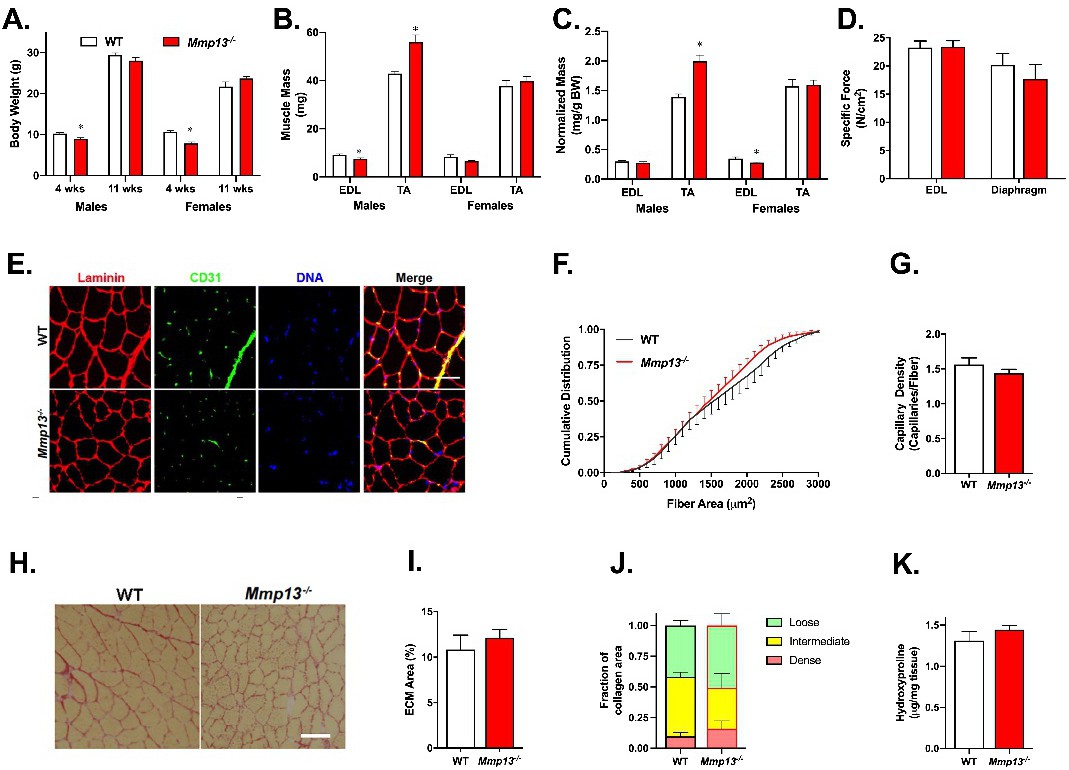Fig. 1. Mmp13-/- muscles exhibit differential size with normal function, vasculature, and ECM. (A) Male and female Mmp13-/- mice at 4 weeks of age are smaller than age-and sex-matched WT mice (N=3-5 per group), but by 11 weeks of age, no body mass differences are apparent. (B) Muscle masses in 11-week old male Mmp13-/- mice have smaller absolute EDL mass but larger TA mass when compared to WT mice (N=5 each). Female mice have no differences in muscle masses between genotypes. (C) When normalized to the body mass, Mmp13-/- male mice had larger TA but females had smaller EDL muscles. (D) The specific force in muscles from Mmp13-/- mice (N=5) are similar to WT (N=5) for EDL and diaphragm. (E) WT and Mmp13-/- were visualized with immunofluorescent staining of laminin for fiber border, CD31 for endothelial cells, and DAPI to visualize DNA from the TA muscle. Scale bar 50 μm. (F) There was no significant change in the cumulative distribution of fiber areas of Mmp13-/- (N=5) compared to WT (N=6) TA muscles. (G) There was no difference in the capillary density (the number of capillaries normalized to fiber number) of the same TA muscles. (H) Picrosirius red staining of TA muscles showed areas occupied by ECM from WT and Mmp13-/-muscles. Scale bar 50 μm. (I) The area fraction of ECM was similar for WT (N=6) and Mmp13-/- (N=8) TA muscles. (J) The proportion of loose (green), intermediate (yellow), and dense (red) collagen was similar for WT (N=4) and Mmp13-/- (N=4) TA muscles. (K) The amount of hydroxyproline was similar for WT (N=4) and Mmp13-/- (N=4) quadriceps muscles. The * represents a significant (p<0.05) difference between genotype.
